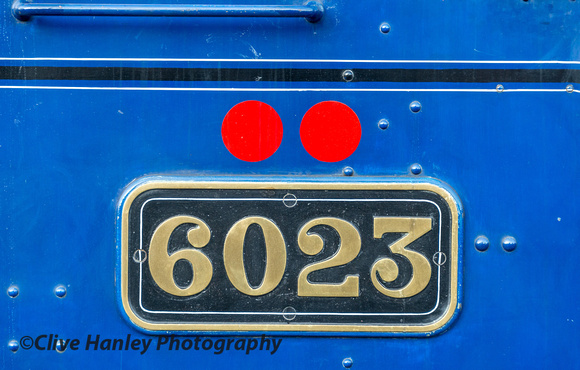6023 numberplate and its two red dots indicating an axle load of 22tons10cwt.(50,400lbs)
Weight restriction
The GWR system was divided into quot;redquot;, quot;bluequot;, quot;yellowquot; and quot;uncolouredquot; routes, according to the maximum axle load which the Civil Engineer would permit: for example, engines of axle load greater than 16 tons were not permitted onto quot;yellowquot; or quot;uncolouredquot; routes. In between these were quot;dotted redquot; and quot;dotted bluequot; routes, where overweight engines were permitted subject to speed restrictions. In addition, there were the quot;hatched redquot; routes, where any locomotive was permitted: the 6000 (King) class were barred from all except the quot;hatched redquot; routes. In August 1938 a summary of the GWR routes by colour was published.
Up to two coloured discs were painted on the cabside of GWR steam locomotives and some Western Region diesel locomotive classes, to show that the maximum axle load of the engine did not exceed a particular value, the absence of such circles meaning that no restrictions applied to the locomotive


